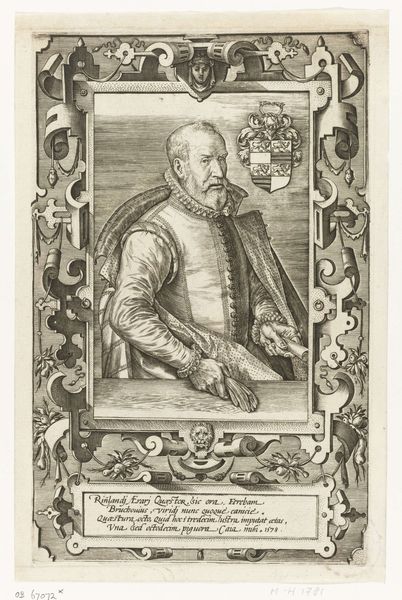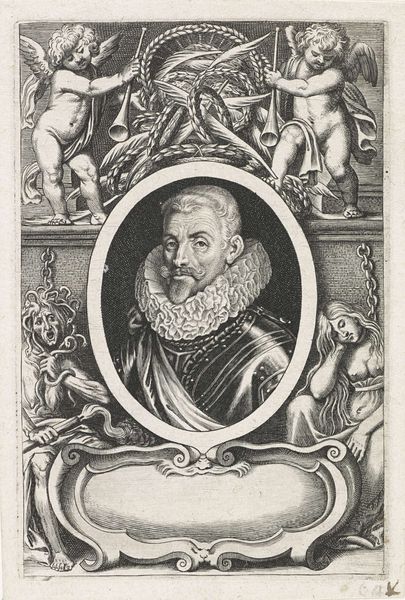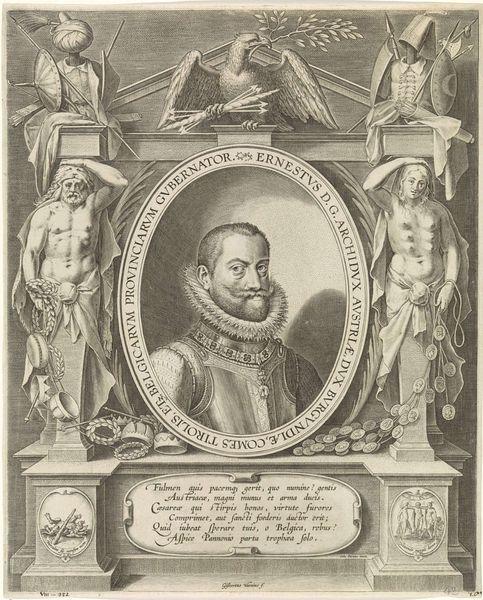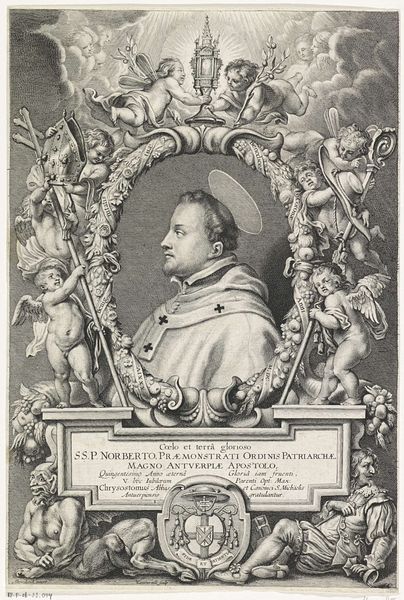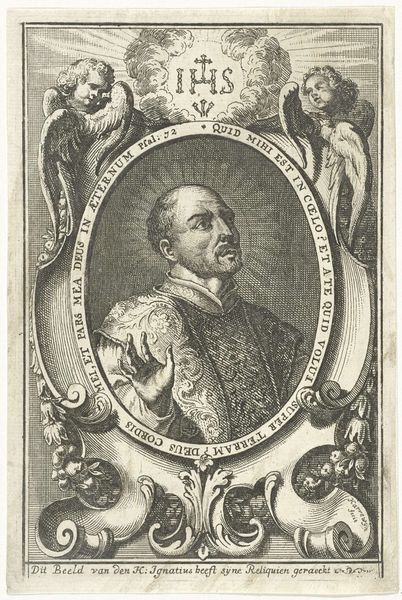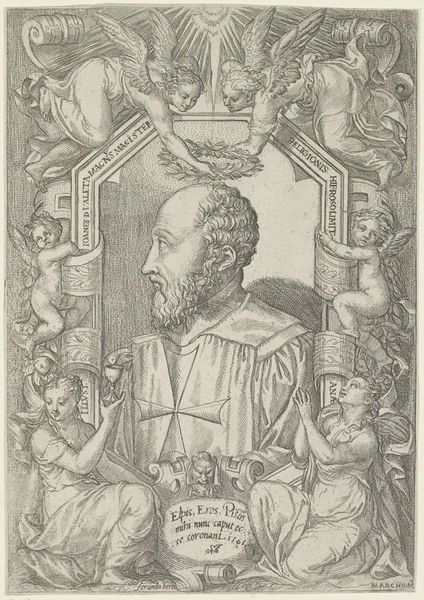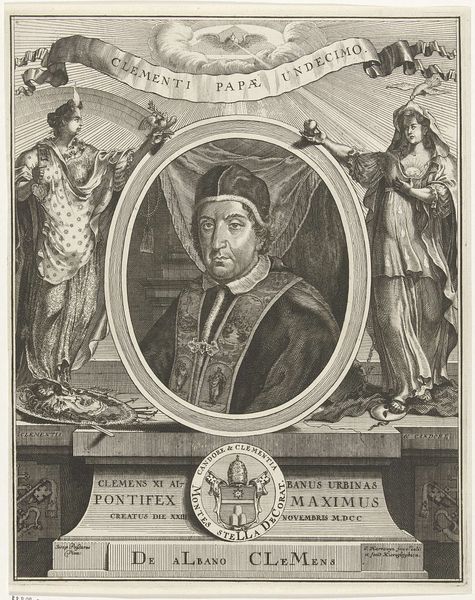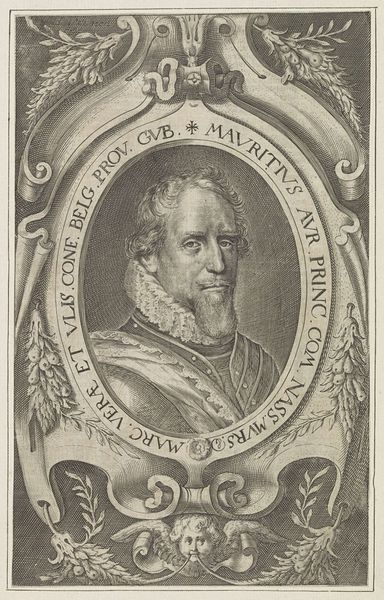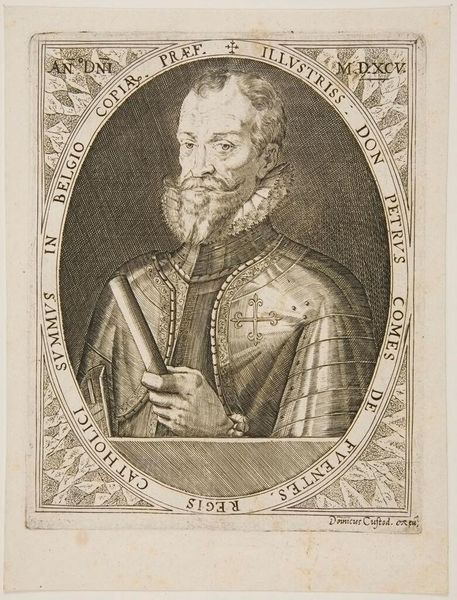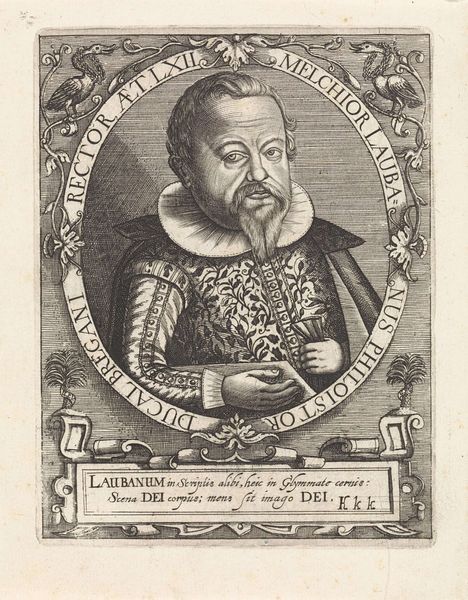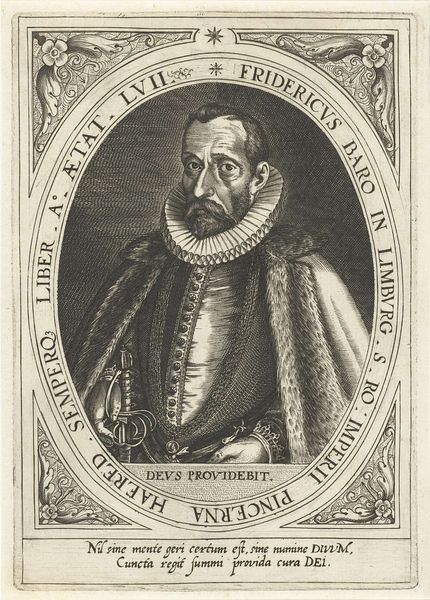
#
mechanical pen drawing
#
pen illustration
#
old engraving style
#
junji ito style
#
personal sketchbook
#
highly detailed
#
pen-ink sketch
#
pen work
#
comic style
#
pencil art
Dimensions: height 220 mm, width 149 mm
Copyright: Rijks Museum: Open Domain
This engraving of Justus Lipsius was created by Theodoor Galle in the late 16th or early 17th century. Galle immortalizes the humanist philosopher within a framework of allegorical figures and Latin inscriptions. Consider how Lipsius's identity as a scholar is constructed through visual and textual cues. The figures of Virtus, Doctrina, and Modestia that surround his portrait were central to the construction of masculine identity and civic virtue during the Renaissance. The inscription emphasizes Lipsius's mind, spirit, and face as worthy of artistic representation. How does this portrayal reflect the values and ideals of the time? The choice of Latin for the inscriptions positions Lipsius within a tradition of classical learning and intellectual authority, shaping perceptions of his identity and legacy. This engraving is not just a portrait, but a carefully constructed statement about intellectual and moral character, inviting us to reflect on the values we associate with leadership and knowledge.
Comments
No comments
Be the first to comment and join the conversation on the ultimate creative platform.

